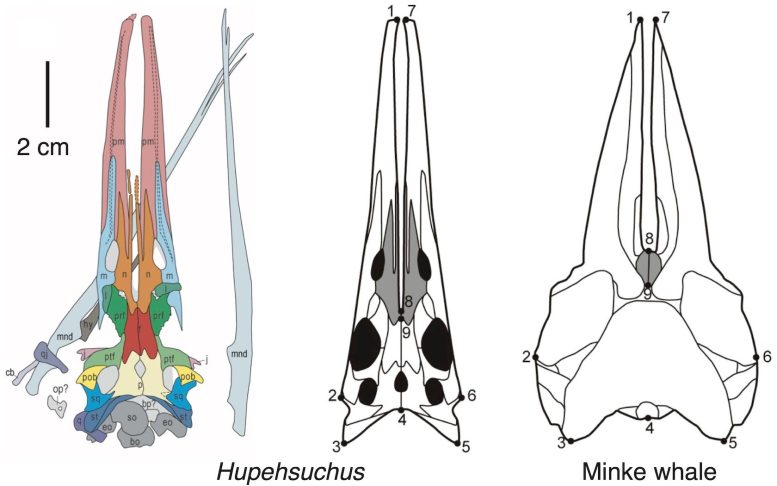
New research has unveiled a 250-million-year-old reptile fossil, Hupehsuchus, in China, showing that it used a whale-like filter-feeding method. This discovery highlights the creature’s unique adaptations and provides insight into early marine ecosystems.
A remarkable new fossil from China reveals for the first time that a group of reptiles were already using whale-like filter feeding 250 million years ago. This groundbreaking discovery paints a vivid picture of ancient marine ecosystems.
Detailed Analysis of Hupehsuchus
New research by a team from China and the UK has detailed the skull of an early marine reptile called Hupehsuchus. This ancient reptile possessed soft structures, such as an expanding throat region, enabling it to engulf large masses of water containing shrimp-like prey. Additionally, it had baleen whale-like structures to filter food items as it swam forward.
The team also discovered that the Hupehsuchus skulls exhibit the same grooves and notches along the edges of its jaws that are found in baleen whales, which have keratin strips instead of teeth.
Comments From the Research Team
“We were amazed to discover these adaptations in such an early marine reptile,” said Zichen Fang of the Wuhan Center of China Geological Survey, who led the research. “The hupehsuchians were a unique group in China, close relatives of the ichthyosaurs, and known for 50 years, but their mode of life was not fully understood.”

“The hupesuchians lived in the Early Triassic, about 248 million years ago, in China and they were part of a huge and rapid re-population of the oceans,” said Professor Michael Benton, a collaborator at the University of Bristol’s School of Earth Sciences. “This was a time of turmoil, only three million years after the huge end-Permian mass extinction which had wiped out most of life. It’s been amazing to discover how fast these large marine reptiles came on the scene and entirely changed marine ecosystems of the time.”
New Skull Discoveries and Insights
“We discovered two new hupehsuchian skulls,” said Professor Long Cheng, also of the Wuhan Center of China Geological Survey, who directed the project. “These were more complete than earlier finds and showed that the long snout was composed of unfused, straplike bones, with a long space between them running the length of the snout. This construction is only seen otherwise in modern baleen whales where the loose structure of the snout and lower jaws allows them to support a huge throat region that balloons out enormously as they swim forward, engulfing small prey.”
Li Tian, a collaborator from the University of Geosciences Wuhan, added: “The other clue came in the teeth… or the absence of teeth,” says Li Tian, a collaborator from the University of Geosciences Wuhan. “Modern baleen whales have no teeth, unlike the toothed whales such as dolphins and orcas. Baleen whales have grooves along the jaws to support curtains of baleen, long thin strips of keratin, the protein that makes hair, feathers, and fingernails. Hupehsuchus had just the same grooves and notches along the edges of its jaws, and we suggest it had independently evolved into some form of baleen.”
Reference: “First filter feeding in the Early Triassic: cranial morphological convergence between Hupehsuchus and baleen whales” Ecology and Evolution.
Funding: China Geological Survey, National Natural Science Foundation of China, Foundation of Hubei Key Laboratory of Paleontology and Geological Environment Evolution
Never miss a breakthrough: Join the SciTechDaily newsletter.
1 Comment
I do not believe anything that comes out of that Communist country. Nothing!